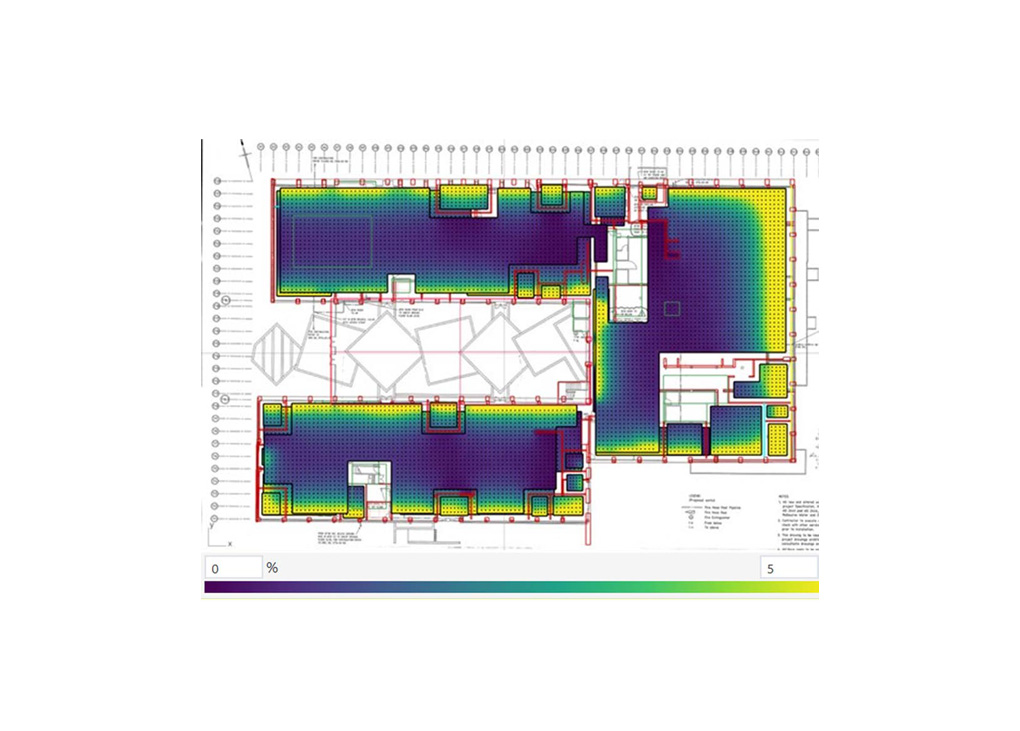A team from UNSW Sydney supported by the federal government has released a series of case studies that highlight the biggest opportunities for energy efficiency savings in existing commercial buildings.
The project originated with the Department of Industry, Science, Energy and Resources (now DCCEEW), which sought to develop case studies showcasing the top low-cost options and “quick wins” for energy-efficiency upgrades in commercial buildings. The intention was to undertake the exercise for all building classes in different Australian climate zones and contexts, including both capital cities and regional areas.
Beyond HVAC retrofits
Previous projects have documented case studies on retrofits and replacement of HVAC&R systems. According to Senior Lecturer Riccardo Paolini, who was part of the project team, the new project takes a different approach.
“It includes a wider consideration of the building fabric,” he says, “with ‘low-hanging fruits’ allowing building owners to save energy before approaching substantial interventions on the HVAC&R system, thus avoiding oversizing.”
The project team used building simulations to identify options for improving energy efficiency. These integrate information collected through metering and allow for the comparison of different retrofit scenarios and combinations. Also, simulations allow for the consideration of building performance in future climates. In this project, 2030 is modelled, with the RCP 4.5 climate change scenario, as provided by CSIRO.
“The case studies considered in this project include offices, hotels, childcare and aged-care centres, community centres, a library, a restaurant, and a retail building,” says Paolini. “Among the aims, there was the need to consider retrofits of buildings constructed no later than 2010, including buildings with significant potential for energy improvements, as well as buildings that already went through retrofits, with the identification of a virtuous pathway facilitated by the NABERS rating program.”
Although the scope of the project was wider than just HVAC, it did aim to develop information about retrofit or replacement options for these systems.
Early intervention
The project was designed to assist building owners and facility managers in pondering different opportunities in the early stages of decision-making about energy retrofits.
“This precedes the engagement of consultants and helps the building property to think about multiple possibilities, and that they can achieve the biggest savings by identifying the optimal pathway toward energy efficiency,” says Paolini.
“Indeed, the primary target audience is the owners of the vast existing building stock, beyond big players who are routinely assisted by established teams of consultants.”
The project reports can be used by building owners and facility managers in early conversations with NABERS assessors and sustainability consultants to weigh different options to improve energy efficiency.
Key findings
Paolini says that as well as providing a valuable practical resource, the project offered some important takeaways.
“The first thing is that retrieving robust and complete as-built documentation on the building fabric is particularly challenging,” he says, “which leads to the need for making assumptions in building simulations.”
Although the team based their assumptions on Australian and international standards, as well as on the scientific literature, Paolini stresses that there is a strong need to improve record-keeping to assist in building retrofits.
He notes that there are still significant savings opportunities in the replacement of lighting appliances with LED lights and dimmable controls, which are not everywhere yet.
“Also, some interventions on the building fabric are relatively cheap and can be implemented without disrupting the building use,” says Paolini. “This delivers savings in heating and cooling loads that allow for a cheaper retrofit of the HVAC&R system, also freeing resources. Therefore, staged interventions can trigger a virtuous path towards increasingly efficient buildings.”
Some of the case study buildings – such as Building 10, Knox Civic Centre, and Building 3 Frasers Suites Sydney – progressively implemented retrofit interventions through the years and represent success stories.
“Further, considering the future climate scenarios, by 2030, the cooling energy loads will increase and therefore, many buildings will require a retrofit to adapt to the new climate context, with many heating-dominated or mixed climates becoming cooling-dominated,” says Paolini.
Finally, Paolini says that although appliances (plug loads) were not covered in the project, after all the retrofits were modelled, they represented a significant opportunity for savings and could be discussed by the building property with NABERS assessors and consultants.
More information, including the case study reports, is available at the project website.
The project was also presented at the NABERS + CBD Conference 2022.
 Mark Vender
Mark Vender


Leave a Reply